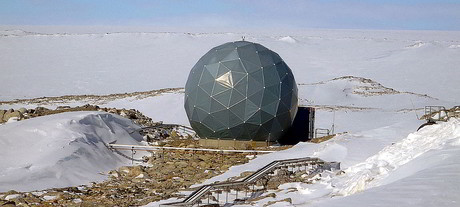Antarctic research boosted with Speedcast services

Speedcast will supply mission-critical remote communication services for Australia's Antarctic research stations.
The federal government has awarded Speedcast a contract to supply VSAT bandwidth, equipment and installation, including training, antenna upgrades and repositioning, plus network optimisation, for Australia's Antarctic research stations.
The company will also provide additional support to other scientific users such as Geoscience Australia at the three Australian Antarctic research stations, Mawson, Casey and Davis, as well as the base on Macquarie Island.
The tender for the contract was released in June 2017 by the Australian Antarctic Division (AAD). The tender documents stated, “The AAD intends to take this opportunity to substantially upgrade the satellite capacity and support services to each of its Antarctic stations.”
With the updates Speedcast is making to the satellite links, the research program will have four times more throughput than it had with their previous provider once installations are completed in January 2018.
“Our team of highly qualified engineers is proud to provide 24/7 support and solutions to enable individuals in these remote and harsh locations to communicate with the outside world for day-to-day communication and in the event they need emergency assistance,” said Pierre-Jean Beylier, CEO, Speedcast.
“This win is an example of the increase in government spending in satellite communications and Speedcast’s ability to grow market share as the government segment continues to expand.”
While there may be up to 120 people on each research station in the summer, during the harsh winters of Antarctica when travel to the icy continent is not possible, the population of each research station is much smaller and satellite communication is their only link to the outside world. The reliability of these links is essential for the wellbeing of wintering expeditioners and enables telemedicine support if required.
Harsh environm
The four Australian ‘deep south’ bases — Mawson, Casey, Davis and Macquarie Island — are staffed all year round by researchers and support staff. Their remote locations make communications with the wider world essential for health, safety and research purposes.
“The Antarctic environment creates challenges for the delivery of the services,” the AAD’s tender said. “For the Antarctic stations, temperatures are often down to -40°C with winds greater than 185 km [per] hour and heavy snow. The vessel routinely encounters waves of 10+ metres, with winds and snow similar to the Antarctic stations.
“Macquarie Island experiences nearly continuous gale force winds from the west as well as rain, sleet and snow for around 300 days of the year. Temperature varies from around -10°C in the winter to +10 in the summer.”

Mawson is located on the coast of Mac. Robertson Land, on the edge of the Antarctic plateau. It was Australia’s first continental station and remains the longest continuously operating station south of the Antarctic Circle.
Casey is situated in the Windmill Islands, a little outside the Antarctic Circle. The station was officially opened in 1969 as a replacement for the ex-US Wilkes Station on the Clark Peninsula, which was being slowly and relentlessly eaten up by snowdrifts.
Davis is the most southerly (68.5 degrees south) of all of Australia’s stations, and situated on the Ingrid Christensen Coast of Princess Elizabeth Land. The location is on the coast of the ice-free Vestfold Hills.
Macquarie Island is a little less than halfway between Australia and Antarctica. Colloquially known as ‘Macca’, the remote island is 34 kilometres long and five kilometres wide at its widest point. It takes around three days to sail from Hobart to Macquarie Island, assuming the weather is kind. The island’s first scientific station was established in 1911 by Sir Douglas Mawson.
5G mmWave extended to 14 km in nbn field trials
Live field trials of 5G mmWave technology in parts of the nbn Fixed Wireless network achieved...
Mavenir and Terrestar achieve NTN Voice over NB-IoT call
The achievement was conducted over a 3GPP-standardised NTN S-band spectrum, avoiding interference...
Canada to purchase $6.6bn Australian radar system
Canada intends to purchase an Australian-developed, over-the-horizon long-range radar system, in...





